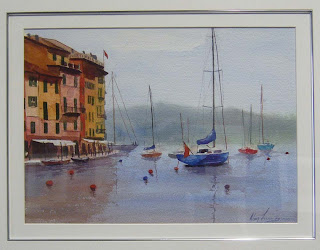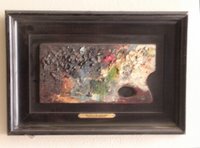Wednesday, March 28, 2007
Monday, March 19, 2007
Kathy Garness

Kathy Garness was President of the Palette and Chisel in 1983.
(and coincidentally, as a member of the Ethics Committee, is currently involved in the political life of my Village, Forest Park, Illinois)
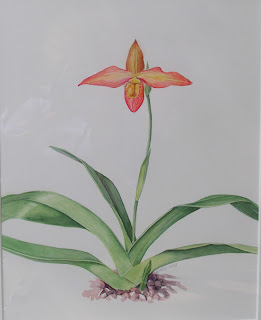
Her art-related blog can be found here
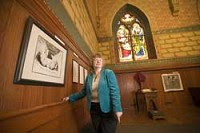
Sunday, March 11, 2007
Exhibit: Plein Aire Painters: 2007
(Please note: Since this exhibit was not open on either Sunday or Monday, this is only a partial display of those items that happened to be still on the wall when I finally got access)

Vladimir Tartakover

Vladimir Tartakover
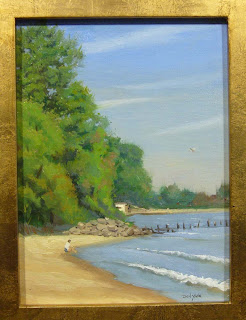
Don Yang
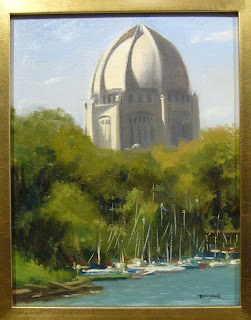
Don Yang
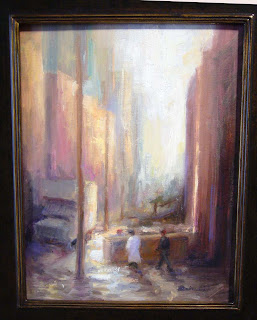
Marci Oleszkiewicz
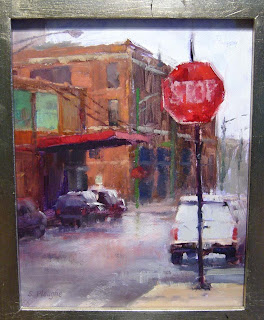
Susan Ploughe

Sergio Rocha

Sergio Rocha
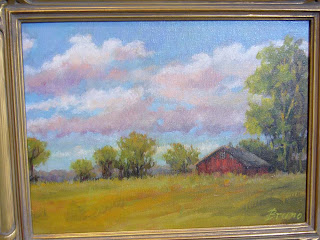
Susan Bruno

Barbara Herring

Lee Radke
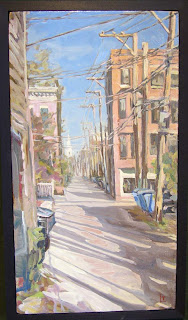
Tim Leeming

Lee Radke

Vladimir Tartakover

Vladimir Tartakover

Don Yang

Don Yang

Marci Oleszkiewicz

Susan Ploughe

Sergio Rocha

Sergio Rocha

Susan Bruno

Barbara Herring

Lee Radke

Tim Leeming

Lee Radke
Sunday, March 04, 2007
More on Baldridge
 Continuing Stuart's great post , the more I learn about this man, the more I like him !
Continuing Stuart's great post , the more I learn about this man, the more I like him !And it's probably worth the $10 to get a copy of his Autobiography for the Palette and Chisel library (if we can ever take that room seriously)

He and his wife, Caroline Singer, in addition to collaborating on children's books, traveled around the world -- especially through Africa and the Middle East. (the above is an illustration from "Time and Chance")
It's as if (like Malvina Hoffman at the Field Museum) he wanted to catalog the variety of the world's people.
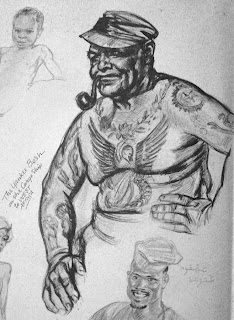
But one genre he didn't neglect was his own: i.e. the footloose American.
He was something of a patriot, as he wrote in one of his many political screeds:
"One of the few groups that had tried early to awaken awareness in the public had been the Willard Staits Post, the only liberal post in the American Legion. I had been proud of my association with its members, and during five terms as Commander had spent a large proportion of my time on its projects. In 1922 we prepared a book explaining "the loss of our illusions about war as an institution, either as an end in itself or as a means of settling international misunderstanding." Our message was to the "young fellows reading war-scare headlines - say in 1945"(headlines came earlier than we anticipated!) In several important instances foreseeing international disaster,the membership publicized appeals for action by statesmen before it was too late -- such as an analysis of the problems of the Ruhr.
Constant pressure to liberalize the Legion itself brought some success:
my Americanism booklet,
its aim to revivify faith in democratic idealism,
was not without effect."
Constant pressure to liberalize the Legion itself brought some success:
my Americanism booklet,
its aim to revivify faith in democratic idealism,
was not without effect."

Here's one his (ever timely) anti-war cartoons:

And here's part of the text published by the Willard Straight post (named after the banker who founded the "New Republic", and whose wife founded "The New School of Social Research").
The following Baldridge text might serve as an introduction to his kind of "liberalism":
"As fuzzy-minded as any during the period between wars were most so-called "liberals". Failing to distinguish between left-of-center and Stalinism, becoming totalitarian liberals, they deadened the liberal movement. Few remained as staunch as Norman Thomas, remembering that human affairs can be controlled by enlightened reason; truth is born out of discussion; civil liberties are vital to democracy; there is no justice where there is no kindness; the great ends of human life cannot be achieved except by appropriate means.
A search through worldcat finds over 120 listings for his publications, most of them as illustrator -- and most of those in collaboration with his wife or Arthur I. Gates. He even illustrated an edition of "The Spy" by James Fennimore Cooper, and "The Killers" by Ernest Hemingway.
But he also wrote some of his own books, including:
*"The parables told to the people by Jesus of Nazareth as recorded in the Gospels"
*"Smallest Poilus of all"
*"Or what's a college for?"



Like so many other P&C artists over the years , Baldridge ended up in New Mexico, and I only wish he were still living in Santa Fe -- so we could get his stories of the early P&C.
But he also wrote some of his own books, including:
*"The parables told to the people by Jesus of Nazareth as recorded in the Gospels"
*"Smallest Poilus of all"
*"Or what's a college for?"



Like so many other P&C artists over the years , Baldridge ended up in New Mexico, and I only wish he were still living in Santa Fe -- so we could get his stories of the early P&C.
Saturday, March 03, 2007
The Sausage-Vat Murder Trial Of Adolf Luetgert
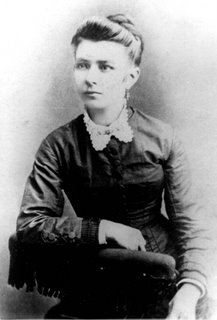
Louisa Luetgert disappeared on May 1, 1897. When asked where his wife was, Adolf Luetgert said he didn't know, that she had gone to visit her sister.
Petite and attractive, Louisa was ten years younger than Adolf Luetgert, a meatpacker who had immigrated to Chicago from Germany in the 1870's. Adolph Luetgert made sausages in his factory at Diversey and Hermitage. (The building is now converted to condominium lofts.)
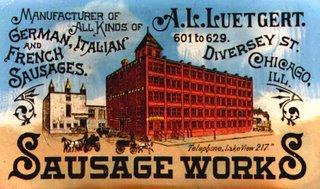
In the police search that followed, authorities learned that Louisa and Adolph had been known to have violent arguments. A sausage factory employee recalled seeing Louisa enter the factory around 10:30 in the evening on May 1, and the night watchman at the plant confirmed his story, adding that he had seen Luetgert with his wife that night at the factory.
Soon enough, the police drained one of large rendering vats in the basement of the factory. Along with a tiny fragment of a human skull, the police found a heavy gold ring with the initials "L.L."--a fact that boded poorly for Luetgert's future defense team, since Luetgert had given his new bride a heavy gold ring inscribed “L.L.”
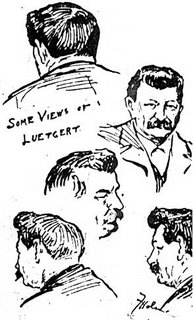
Louisa's body was never found. Although no witness to the murder ever came forward, Luetgert was charged with his wife's murder shortly after she disappeared. His first trial ended in a hung jury.
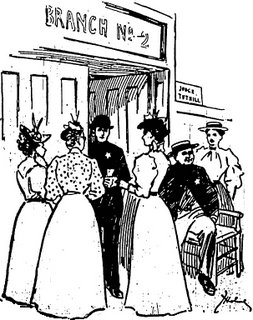
While awaiting retrial, Luetgert wrote a newspaper article in which he theorized that Louisa was "wandering about in a distracted condition, in utter ignorance of the fact that her disappearance has caused me to lose all of which she was once so proud." Luetgert failed explain how her ring ended up in the sausage vat.



At the second trial at the old criminal court building (on Hubbard between Clark and Dearborn, now converted to offices), Luetgert was convicted and sentenced to life in prison.
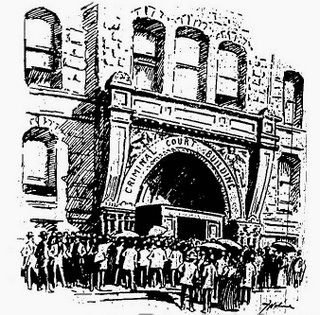
One of the illustrators at Luetgert's trial was John Francis "Frank" Holme (1868-1904), one of the founding members of the P&C. Holme was a brilliant courtroom sketch artist, who worked for different Chicago newspapers, including the Daily News and the Post, in the 1890's. The sketches here are by Holme. I found them at a website devoted to the Luetgert murder.
In addition to founding the P&C, Holme founded the The School of Illustration and taught drawing courses by mail. Among the instructors at Holme's school in the Fine Arts Building on Michigan Avenue were the Leyendecker brothers and F.W. Goudy, a pioneering type-face designer. Will Carqueville was another instructor at The School of Illustration; Carqueville was another of the founding members of the P&C. Another early member of the P&C who was an instructor at Holme's school was W.W. Denslow.
Holme lived on Elm Street and Chestnut Streets during his time in Chicago; he and his wife were known as Mr. and Mrs. Bandar-logs after a saying in Kipling's Jungle Book. In 1895, Holme published Just For Fun, the first book from Bandar Log Press--which consisted of him and his wife. The Bandar Log Press books are known today for their artful typography and printing.
Holme died of tuberculosis in 1904, after having moved to North Carolina, Arizona, and Colorado in search of more healthful weather.
Will Carqueville
An early member of the club, Carqueville was an instructor at Frank Holme's School of Illustration. He was born in Chicago in 1871 and died in 1946.
Here is some of his covers from 1895 and 1896 for Lippincott's magazine:


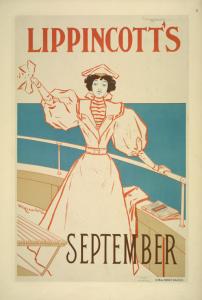



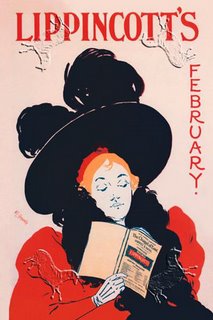
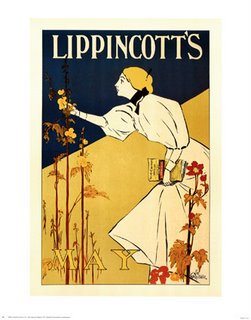
Here is some of his covers from 1895 and 1896 for Lippincott's magazine:











